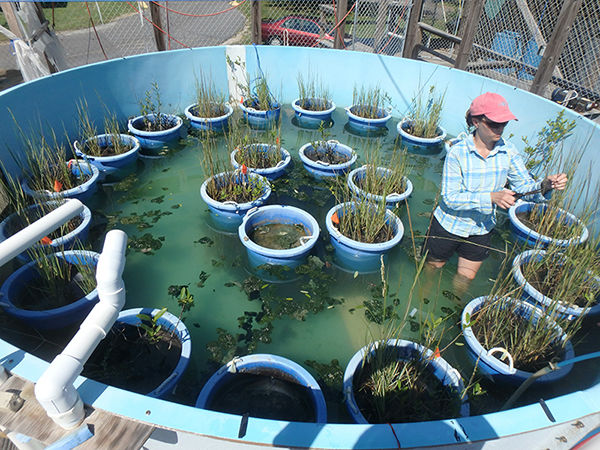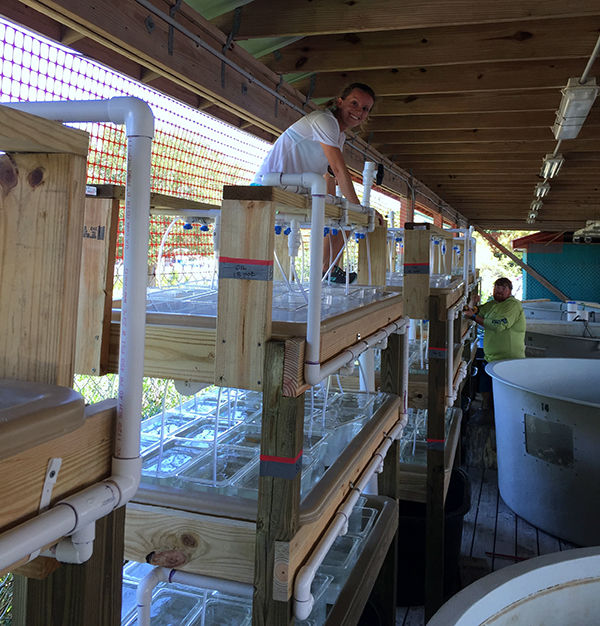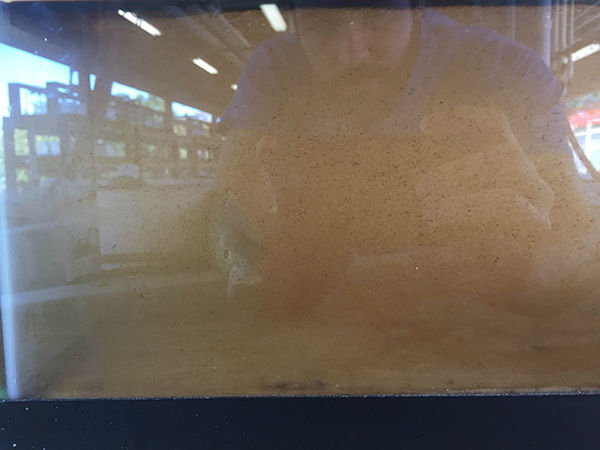
The summer and early fall has been a busy time for many of ACER’s scientists and staff. Field work has taken precedence with everyone hitting the water in June and again in September. In between boat trips, many of ACER’s teams have been working on their laboratory experiments many of which take place at DISL’s large outdoor mesocosm facility. Here are a few highlights from the ACER teams:
The Wetlands group got back from their fall cruise to the Chandeleur Islands and immediately started breaking down their yearlong mesocosm experiment looking at how plant diversity affects their response to oiling. Collaborating with the nitrogen group they took final samples, collecting data on a variety of plant metrics (growth, density, reproduction, nutrient levels), microbial community composition, sediment nutrient fluxes and denitrification rates. They also tapped the expertise of ACER’s microbes group to sample algal mats that unexpectedly developed in the mesocosms.

ACER Wetland group Project Manager Whitney Scheffel said of the experience, “when designing and implementing a large scale project like this one, there are bound to be multiple complications and headaches, but our groups were able to come together and share their expertise and ideas that ultimately made this project a success. We are excited to see what the data tell us about the resilience of our coastal wetland habitats.”
The Oyster group spent the summer building a new closed, re-circulating aquarium system at the outdoor mesocosm facility so that they could begin their experiments during September. They will use 11 different genetic mixes (monocultures and polycultures) of oysters that will be exposed to 6 different water treatments of varying salinity and oil exposure: they have a total of 330 tanks and 15,840 oysters.
Every day the shelving systems are monitored for salinity and water levels and the oysters are fed a diet of mixed algae concentrate. ACER Post-Doctoral Researcher Dr. Meagan Schrandt said at the end of the experiment, all the oysters will be counted to compare the number of live and dead oysters in the treatments and two subsets of samples will be taken: one for measuring shell growth and one for looking at general oyster condition using a formula relating the amount of tissue to the amount of shell for each oyster.

The Consumer group has made considerable progress on their mesocosm experiments investigating how oil affects the feeding habits of fish and crabs. Comparing behaviors of a single predator system to a multiple predator system, they hope to see how oil may impact the productivity of coastal food webs.
ACER technician Scott Alford expects to wrap things up by the end of the year and is excited to see how coastal food webs may have been impacted by the Deepwater Horizon oil spill. Scott said one of the most interesting things he has seen so far is how different predators interact and their different styles of hunting their prey.
You can always keep up with ACER, our activities and upcoming events at acer.disl.org or like us on Facebook.